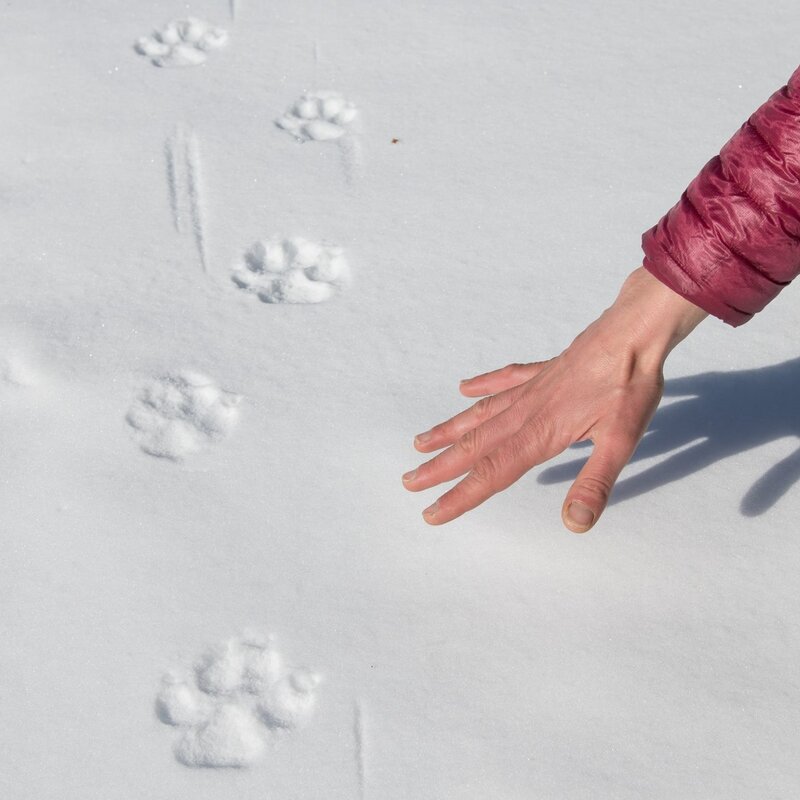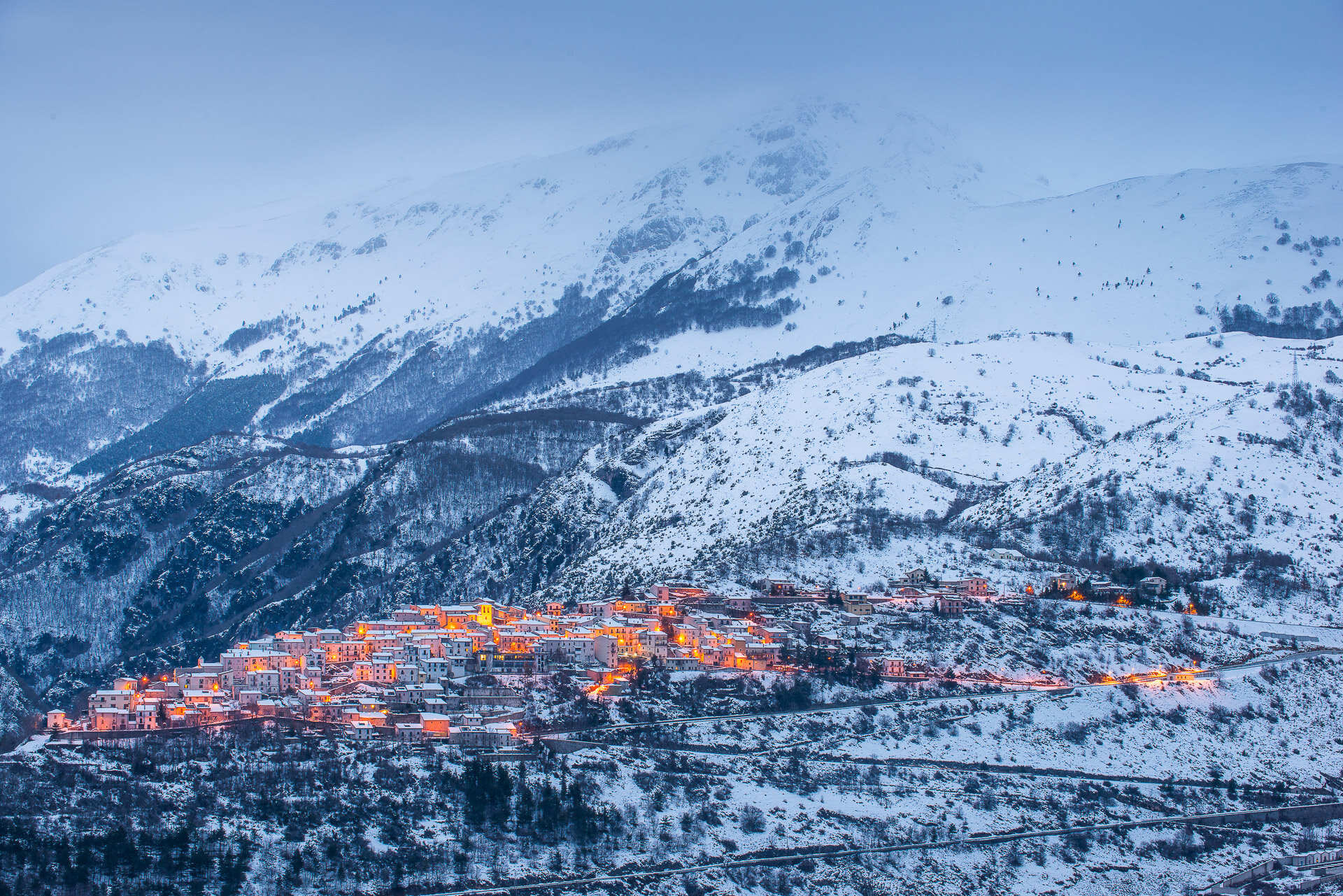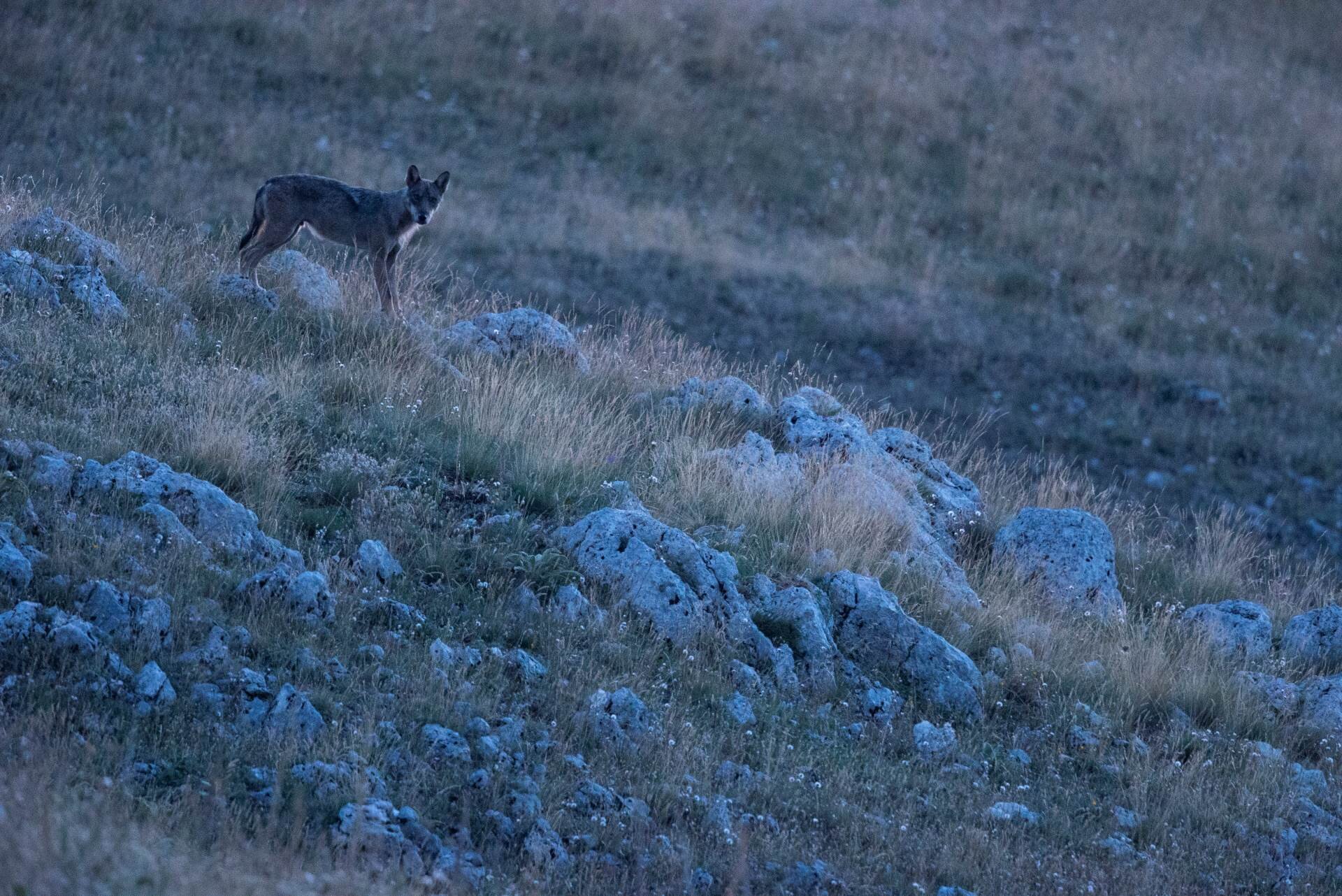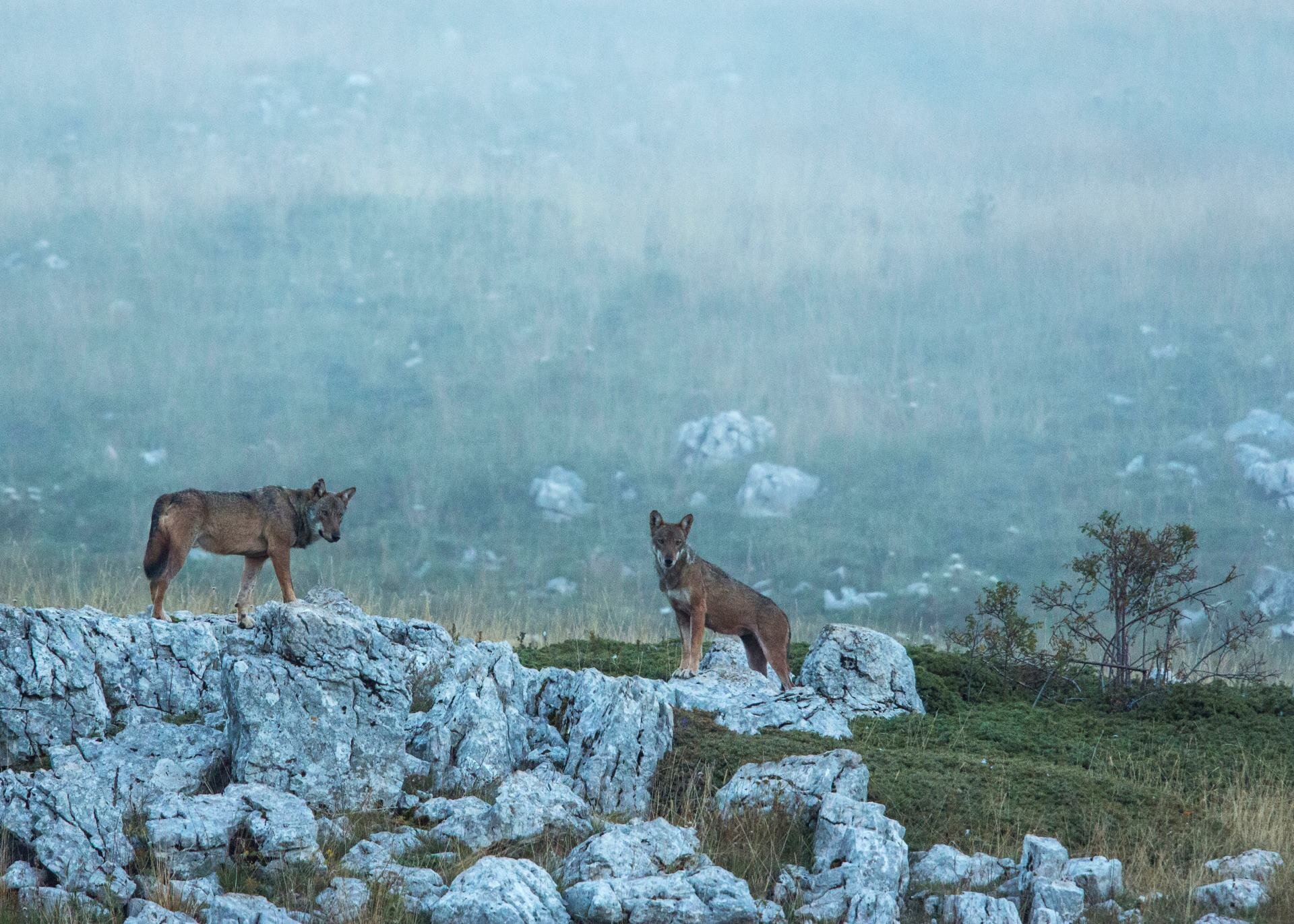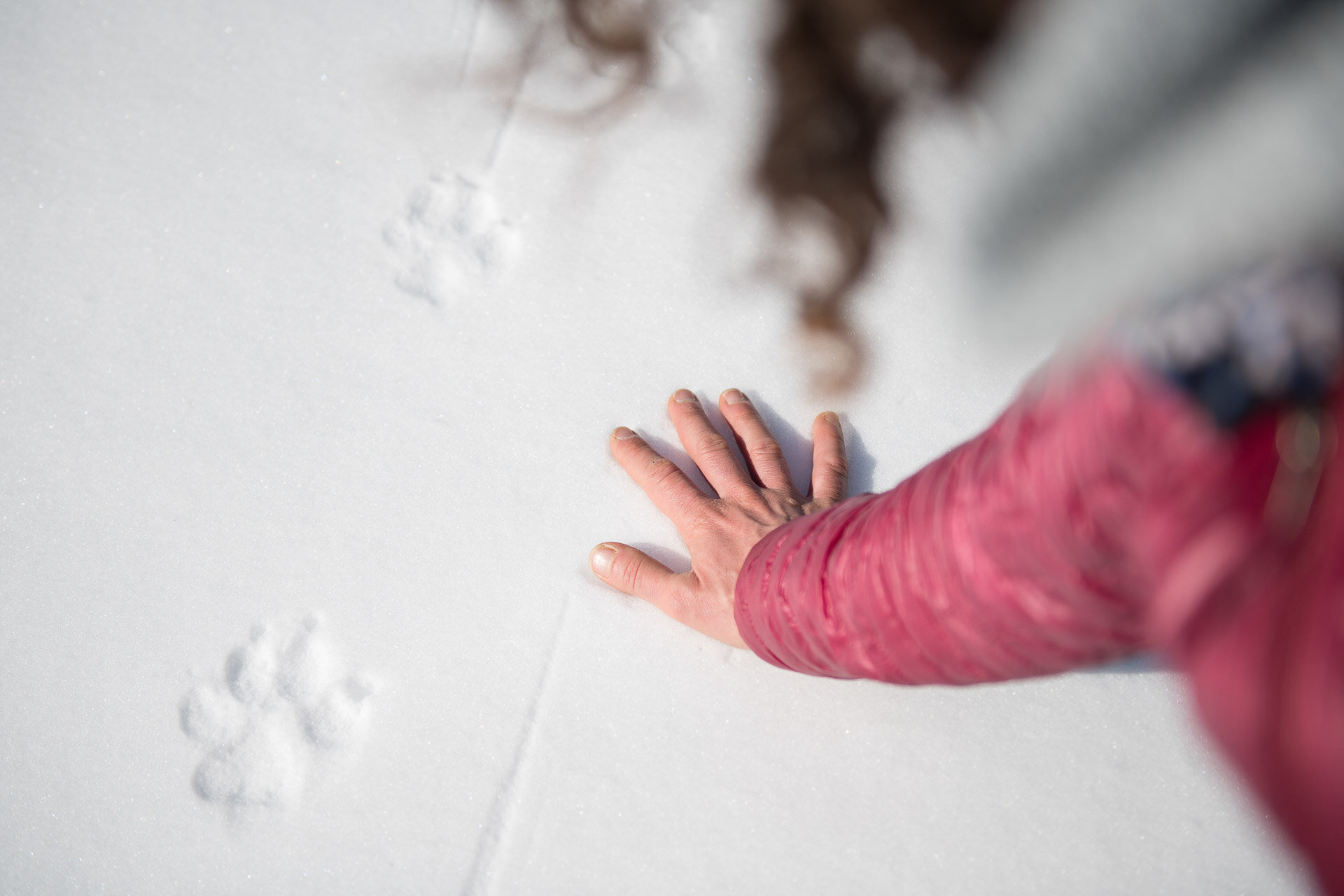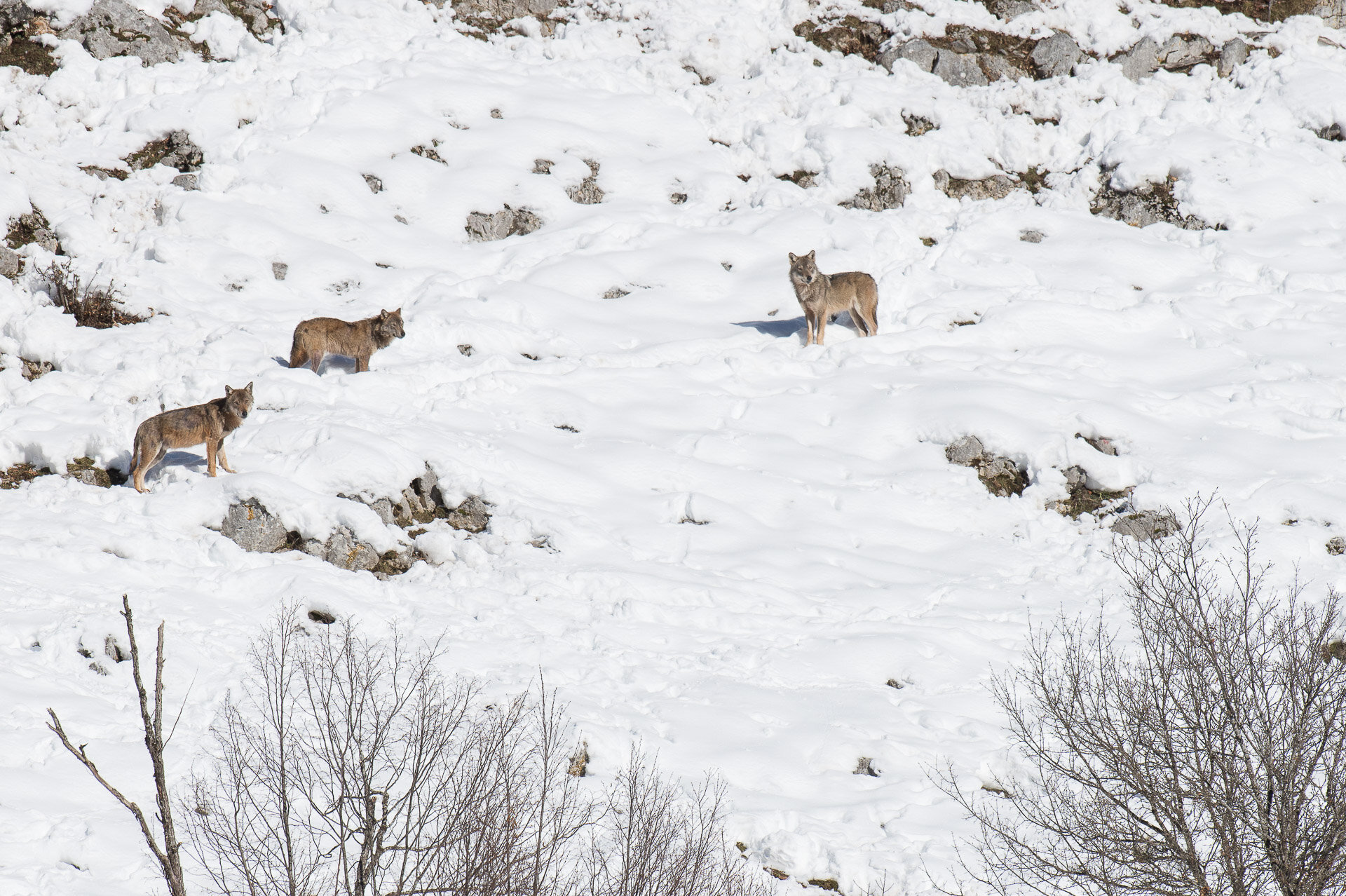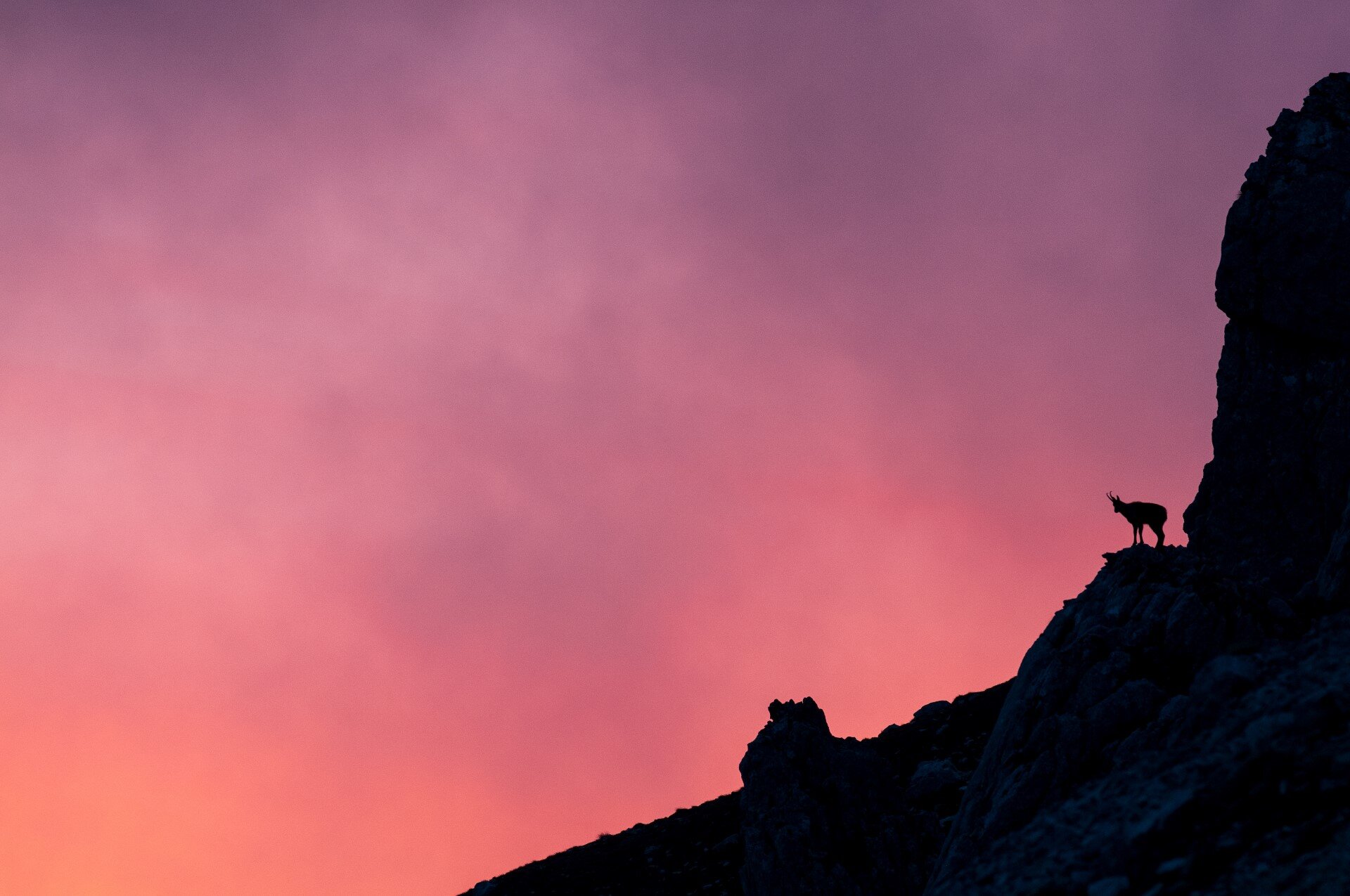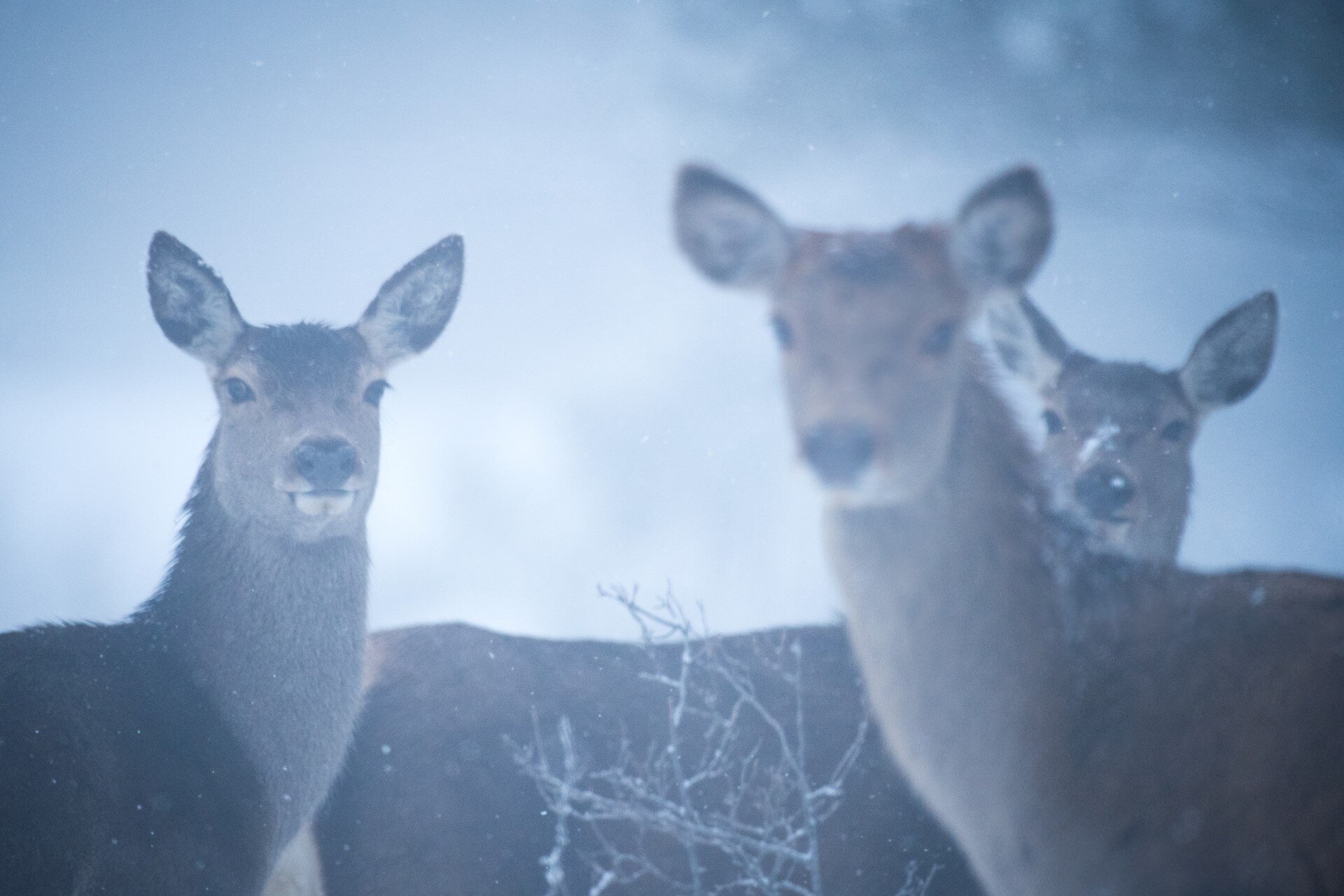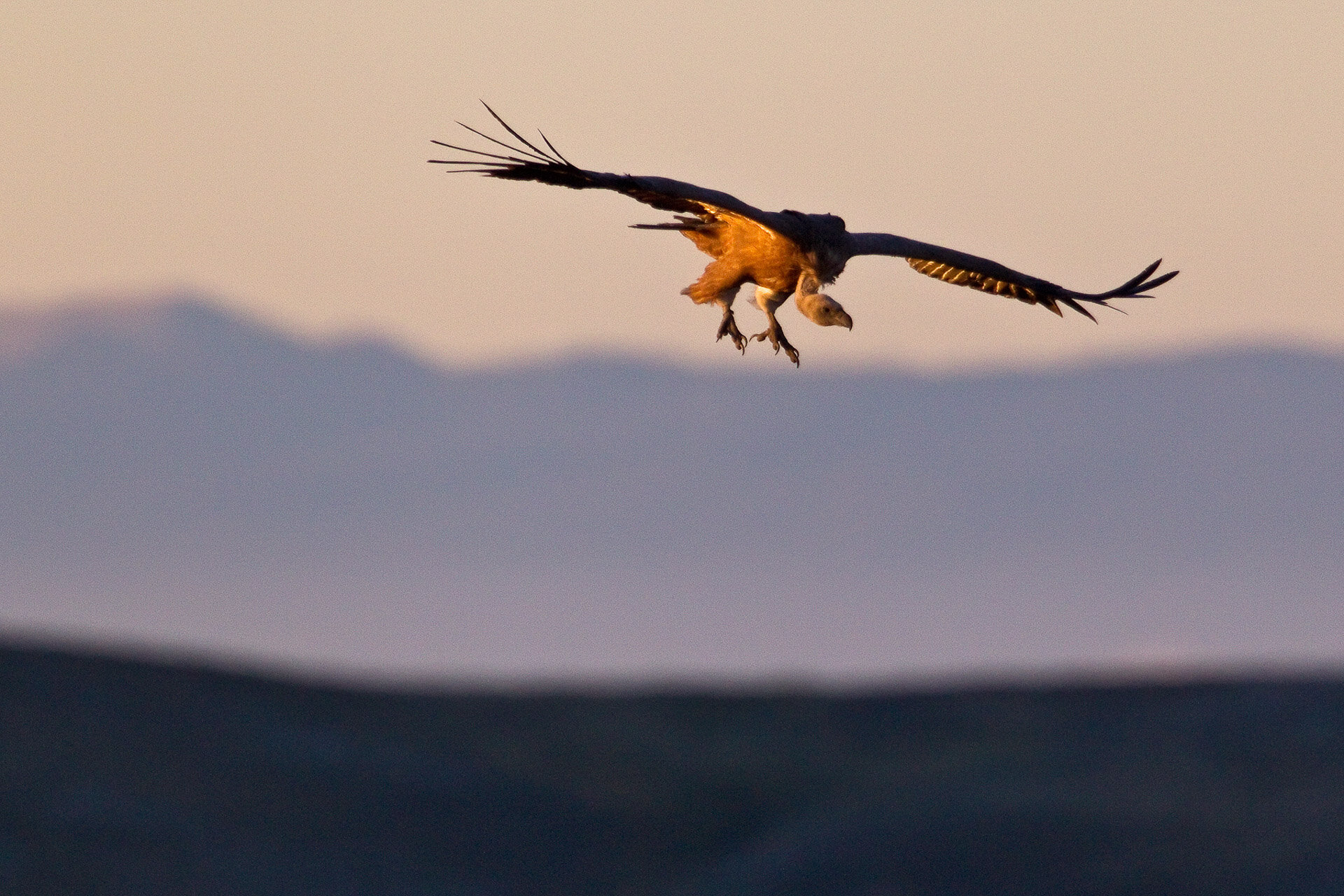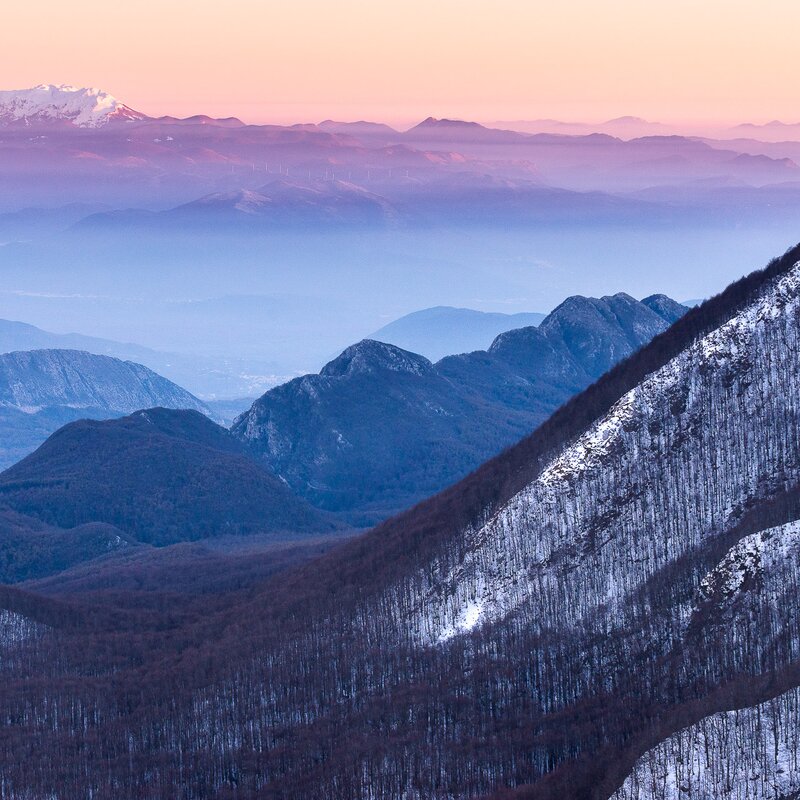The Abruzzo, Lazio and Molise National Park is one of the oldest nature reserves in Europe. Just two hours' drive from Rome, it has been protecting ancient forests since 1922, some of them now some of them included in the UNESCO World Heritage List. It is home to the last native Brown bears in Italy, the elegant Apennine chamois and many other rare and endangered species. The scenery is one of mountains over 2000 metres high, covered in beech woods interrupted only by clearings and meadows, small and scattered turreted villages of medieval origin almost camouflaged on the slopes of the valleys.
For a dizzying succession of millennia, wolves have considered the vastness of the boreal world their home; their deep howls, their adventurous hunts in a landscape populated by large herbivores, were the very markers of a world still intact. Our Paleolithic ancestors admired and emulated them, and it is likely that in a reality where the risk of an adventurous life was widely shared, losses on both sides occurred without fuss or significant retaliation.
Then, in more recent times, cultural upheavals in the Old World changed the way people looked at wolves; we became livestock owners, we wiped out wild herbivores to make room for our flocks and herds. The wolf? At the very least, an enemy; at the worst, depending on the level of frustration and ignorance of the rural communities and the inherent dark political and religious provocation, a demon, a scourge, a calamity to be eradicated.
In Abruzzo, through a series of incredible coincidences, some accidental, others deliberate and sought, some of the last Western European wolves found refuge; those that can be seen in the Abruzzo Lazio and Molise National Park are the direct descendants of those survivors. Never extinct, never reintroduced!
-
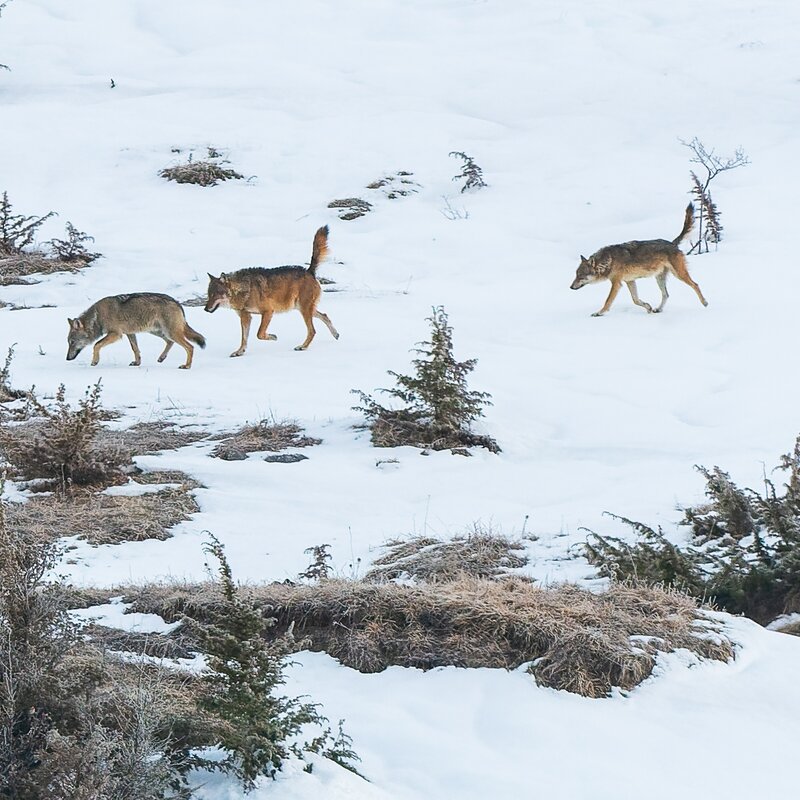 from January 15, 2026 to March 4, 2027
from January 15, 2026 to March 4, 2027Wolf Tracking in Abruzzo
A focused exploration into the Apennine wolf, conducted in the winter environment of Abruzzo. This experience combines guided hikes with special sessions where you can learn to spot wolf signs and understand their ecological importance in the Italian region.
-
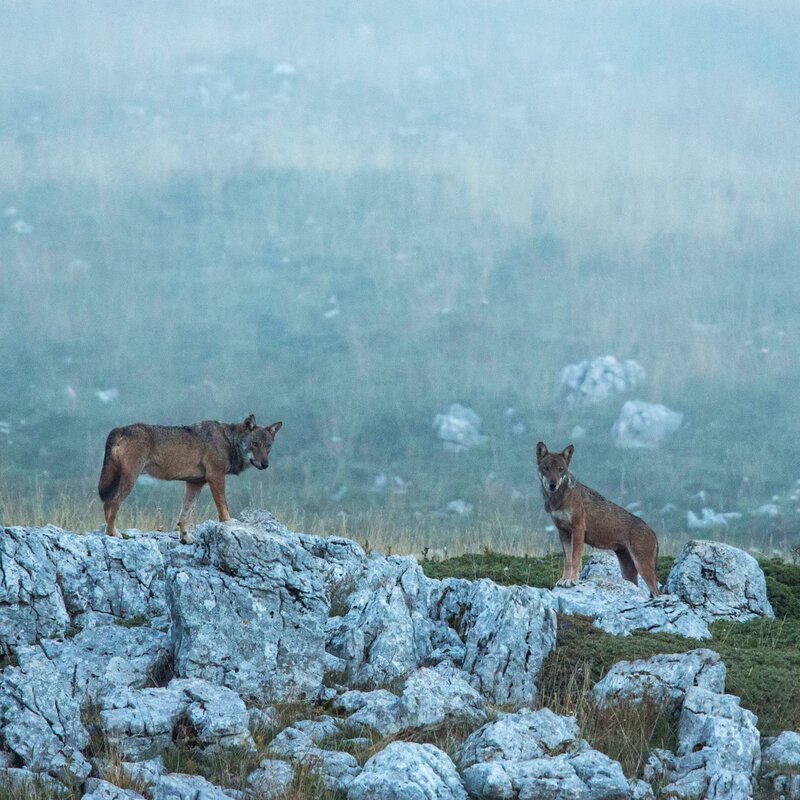 from June 20 to August 29, 2026
from June 20 to August 29, 2026Tales of wolves and sheperds
A two-day immersive experience dedicated to wildlife observation and the discovery of the Apennine wolf, with an overnight stay in a mountain refuge in the heart of the Abruzzo, Lazio and Molise National Park.
But what exactly is wolf-tracking? We asked Andrea De Angelis, International Mountain Leader, Nature Guide and wolf tracker in force for Wildlife Adventures, a tour operator based in the Abruzzo, Lazio and Molise National Park that offers the appetising opportunity to tiptoe into the kingdom of the Old World wolves through attentive and dedicated experiences.
Andrea, what is wolf-tracking?
"Literally, it is tracking the presence of wolves in the field, an approach used by biologists and wildlife managers to obtain data on the presence, consistency and habits of the predator in a given area... to put it more simply, for us it is an activity of total immersion in the world of the wolf, articulated in a few days experience in which, in addition to real Wolf-watching sessions aimed at the direct observation of free-ranging specimens, we alternate excursions in the habitat of the species in search of signs of its presence, also with the intention of introducing the participants to the complexity of the ecological relationships within a given wolf territory.
The sighting of the predator is not guaranteed, but it is highly probable, as a guides' job is also to keep track of the wolves' next movements, follow up on news, carry out inspections and lead the participants to the areas where, at any given moment, at least one wolf is most likely to be present".
What happens during wolf-watching sessions?
"For sightings, we take advantage of the fact that wolves are active at dawn and dusk, and we move around in time to get to the spot where we will sit and observe at the time when we are most likely to see them. To get to the right location just before dawn, we usually meet the guide at 5 or 6am, depending on the time of year; some locations are a little more than an hour's hike away, while others require only a vehicle transfer to reach observation points with good views. In any case, a great deal of patience is required, as well as the ability to remain in silence and essentially motionless in cold conditions, so adequate clothing is essential.
The guide will provide the participants with excellent binoculars and spotting scopes to enable everyone to better observe the wild animals identified; not only wolves, in fact, but also Red deer, Apennine chamois, Wild boar, birds of prey and, exceptionally, Brown bears frequent the same areas".
What are the chances of spotting a wolf?
"The chances are always real, but even in the best case scenario a certain amount of effort is required from the participants. Wolves camouflage themselves perfectly in the different rocky and grassy habitats, especially when there is no snow cover, so it is very useful to communicate the position of the sighted animals efficiently and effectively within the group. Observing the behaviour of all the other species in the area can also provide clues as to the presence of wolves in the area. Of course it is the guide's job to interpret movements and sounds and facilitate the experience for everyone, but the participants often play a key role too."
When is the best time to see wolves in Abruzzo?
"Wolves can be seen all year round, but in winter the packs are generally bigger and therefore easier to catch, especially if there is a good snow cover. In summer, on the other hand, it is more common to see wolves on the move, starting at dusk, in pairs or, more often, alone".
What other animals can be observed in Abruzzo?
"Both stalking and hiking activities in a wolf-tracking experience offer incredible opportunities to enjoy ever-changing scenery and to observe the national park's extremely rich wildlife (67 mammal species, 230 bird species!). According to the season some presences are emphasised, making them more spectacular - as in the case of the rutting Red deer season between late Summer and early Autumn.
The entire period from spring to early Winter is made precious by the frequency of the flight of Griffon vultures, the elusive passage of Brown bears and the increased activity of many other species (Wild boar, Roe deer, Red fox). Anytime of the year, spotting a Golden eagle is one of the most common yet memorable experiences. Some excursions included in the wolf-tracking tours are also designed to lead participants into the territory of wolf packs in the habitat of the Apennine chamois, an ungulate whose elegance and agility never leave one indifferent."
What added value can the experience with you in the Abruzzo offer?
"First and foremost, a greater probability of getting to spot one of these legendary Abruzzo wolves; we know where wolves are most likely to be at different times of the year and how to approach them at the right distance so as not to interfere with their activities. The use of high quality optical equipment that we provide contributes greatly to making the experience sharper in the memory of those who have experienced it.
By hiring one of our nature guides to try to observe the wolves and other species of the park's fauna means benefiting from the experience of those who, like us, constantly live in this area and, nourished by an extraordinary passion for wolves, are able to tell anecdotes and provide answers that satisfy the curiosity and interest of participants. The ecological reality, the life of wolves is, everywhere, continually evolving. To rely, for this type of experience, on those who live with them on the same territory also means valorising the professional choices of people who, in their own small way, try to contribute, through a correct approach and by providing a initial education, to the construction of a healthy relationship between men and wolves in the Apennines.
Last but not least, we should not forget the added value that the Italian landscape and cultural setting can infuse into a morning of wolf-watching or during the hikes: the chiming of an ancient clock from the bell tower of a nearby village, the density of archeological, historical and artistic memories, the taste, why not, of sipping a cup of real espresso coffee or a cappuccino made properly after two exciting hours spent in the outdoor. For those who come from far away, it is a different way of declining the experience of travelling in Italy, perhaps combining a visit to one of the great classics of our infinite tourist offer with a few days' immersion in a parallel dimension, as authentic as it is unexpected, of our ancient and vital country."
@@CONTENUTO3
